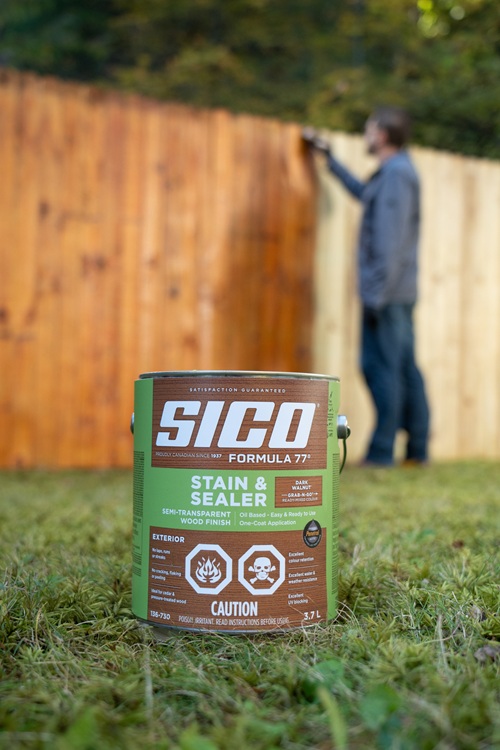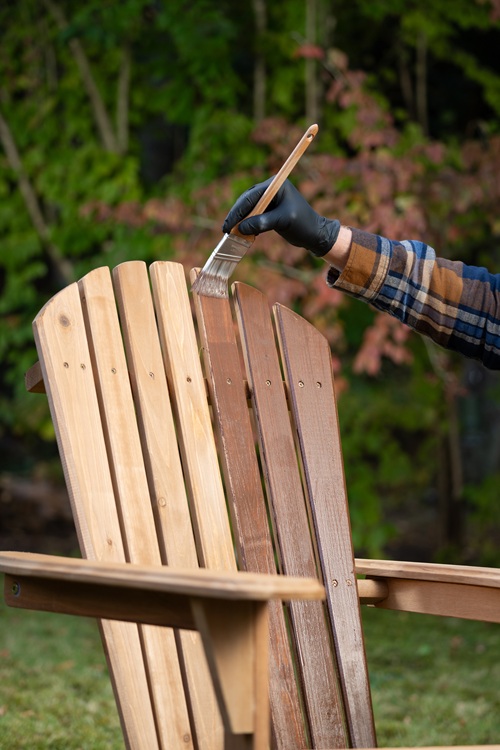With summer here, it’s the perfect time to give your outdoor wood surfaces—the decks, fences, porches, and furniture—a fresh layer of protection. Wood staining protects your outdoor furniture, structures, and fencing from aging and wear. It also enhances the natural beauty of the wood. Wood staining is a bit of an art, where less is more.
Louis-Philippe Morand, Senior Marketing Manager at Sico, explains that the secret to a long-lasting and professional-looking stain is ensuring the product penetrates the wood properly. “A thick coating of stain doesn’t allow the wood to breathe, resulting in streaks, drips, and an uneven finish,” Morand says. “Ultimately, that can lead to peeling, flaking, and moisture damage, undoing all the hard work you put in.”
Sico Formula 77 is part of a new line of one-coat, “grab-and-go” wood stains designed to make the process foolproof. It is available in eight pre-mixed shades. The exterior semi-transparent stain can be applied to almost any wood surface, regardless of temperature, with minimal risk of streaks, laps, or marks.

To ensure a flawless finish, Sico recommends these essential wood staining tips:
-
Preparation is Key: Clean the wood thoroughly to remove dirt, mildew, and loose particles. Use a wood cleaner or a household bleach solution (1 part bleach, 3 parts water) to scrub the surface. Rinse well with water and allow the wood to dry for 2–3 sunny days.
-
Sand the Surface: Once dry, sand the wood to remove residue and open its pores. Use 80–120 grit sandpaper for vertical surfaces, and 60–80 grit for horizontal surfaces. To test the wood’s absorbency, sprinkle water on it. If the water beads up, continue sanding. If it soaks in within 2 minutes, you’re good to go.
-
Cover Every Surface: Make sure to coat all six surfaces of the wood planks, paying extra attention to end grains and any cut or damaged areas. This prevents moisture absorption and helps the wood breathe.
-
Apply Like a Pro: Use a brush for the best results. While rollers, sprays, and pads can also be used, they tend to cause more pooling of the stain. Always apply the stain in the shade and work with the sun, so you’re not staining in direct sunlight.
-
Re-stain Regularly: To keep your wood surfaces looking fresh, re-stain every 2–3 years. Surfaces subject to heavy wear, such as a deck in winter, may need more frequent touch-ups. And when it’s time to re-stain, always properly prepare the surface—staining over cracks and peeling areas will only provide temporary relief.

This summer, give your outdoor wood surfaces the care they deserve. With the right prep work and the right wood stain, you can preserve and beautify your outdoor space with ease.








